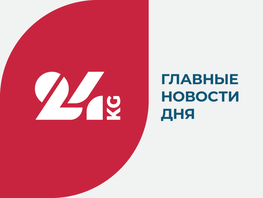Passions around the project on development of Tash-Bulak uranium deposit have not subsided in Kyrgyzstan for the second week in a row. The issue was considered in Parliament the other day. At the same time, the uranium legacy of Kyrgyzstan topic arose again.
Not only the authorities of the country, but also the international community are still trying to eliminate the consequences of uranium mining in Kyrgyzstan.
Number of tailings in Kyrgyzstan
According to the Ministry of Emergency Situations, there are 92 tailings and dumps in Kyrgyzstan, including 33 tailing dumps and 25 mining dumps with a total waste volume of 11.9 million cubic meters under the supervision of the Ministry of Emergency Situations.
The country has 28 radioactive tailings with a volume of 4.3 million cubic meters, 5 toxic ones with a volume of 5.7 million cubic meters, 25 radioactive mining dumps with a volume of 1.9 million cubic meters. The remaining objects are on the balance of economic entities.
«Tailing dumps have been closed from 1966 to 1973. Many objects are located within settlements, in the basins of transboundary rivers. During the Soviet era, long-term measures on protection from natural processes were not taken into account in designing and laying of the tailings. At present, emergency restoration work and additional surveys are being conducted in case of change in weather conditions and anthropogenic impacts on the tailings,» the Emergency Situations Ministry reported earlier.
The most dangerous objects
Tailings are scattered almost throughout Kyrgyzstan. But the main part of them, including the most dangerous objects, is located in the south of the country. Today, there are five most complex objects of the former uranium legacy in the country, where most of the spent uranium ore is stored.
The main facilities for the extraction and processing of radioactive ores in Kyrgyzstan are enterprises of the former Leninabad Mining and Chemical Combine, Kara-Balta Mining Combine and the Kyrgyz Mining and Metallurgical Combine.
Jalal-Abad region has inherited the largest uranium legacy.
Thus, 23 tailing dumps and 13 mountain dumps are located in Mailuu-Suu town with 3.1 million cubic meters of radioactive waste. Three tailing dumps are located in Sumsar village with 4.1 cubic meters of toxic waste. Eight dumps are located in Shekaftar village with 0.7 million cubic meters of waste.
Sovetskoye village in Batken region has two tailing dumps with a volume of 1.6 million cubic meters. Kadzhi-Sai village in Issyk-Kul region has one tailing with a volume of 0.4 million cubic meters, four tailing dumps and four ore and mining dumps are located in Min-Kush village of Naryn region. At least 2 million cubic meters of radioactive waste are buried there.
In addition, there are two large tailing dumps, which are considered to be functioning — in Kara-Balta city and Ak-Tyuz village.
According to some data, the total volume of radioactive waste placed at the tailings of Kara-Balta Mining Combine is about 37 million cubic meters, and the design capacity of the tailing dump is almost twice as high — 63.5 million cubic meters.
The uranium repository in Kara-Balta belongs to the five largest in the republic. Facilities of Kara-Balta Mining Combine are included in the strategic master plan for reclamation of uranium legacy sites in Central Asia.
Ak-Tyuz tailings are located in Kemin district of Chui region. Ore containing lead, zinc and rare earth elements has been mined and processed there since 1942. The processed ore in this area has radioactive elements from minerals containing thorium (turnerite, thorite, zirconium, and others). According to experts, there are four tailing dumps with a total volume of about 2.3 million cubic meters and three dumps with barren rock near Ak-Tyuz village.
Threat to Fergana Valley
Not only Kyrgyzstan but also its neighbors feel the consequences of the development of uranium. For example, Mailuu-Suu tailings are located in a landslide-prone area. In case of natural disasters, they can be eroded, and toxic substances will fall into the river.
As a result, it will harm Fergana Valley, where 14 million people live.
Tailings in Ak-Tyuz pose a constant threat. This has already happened: in 1964, a landslide came down and washed into the river the main part of one of the repositories — Chu river carried radioactive substances to Kazakhstan. Specialists of the Emergency Situations Ministry say that radioactive substances get into the river flowing there after each rain.
Tuyuk-Suu tailing dump is located near Min-Kush village — in the very middle of Kyrgyzstan. Due to the fact that the structures of the dump have not been repaired since the 1960s of the last century, the water flowing directly from under the tailing dump falls into Tuyuk-Suu river — and it flows through the village. The Emergency Situations Ministry says that contamination of the water exceeds the norm 100 times.
Situation at the other large tailing dumps is similar. If they are not reclaimed, then in case of landslides, mudflows and other natural phenomena, hazardous metals can get into the water. Damage to the environment will be colossal.
Financing of reclamation
The government of Kyrgyzstan understands all the danger of the country’s uranium legacy. But we simply do not have our own means to solve the problem. The only option left is to ask for help from the international community. Moreover, Kyrgyzstan is actively promoting the topic on the world stage.
The UN resolution on the role of the international community in prevention of the radiation threat in Central Asia was adopted in 2013 at the instigation of Kyrgyzstan.
In 2017, the resolution was updated. Donors again paid attention to the need for urgent measures for the reclamation of the tailings.
«We conduct rehabilitation and reclamation of the tailings only at the expense of international donors,» the First Deputy Prime Minister of Kyrgyzstan Kubatbek Boronov said at a meeting of the Parliament.
At least 94 million soms of budget funds have been spent on the maintenance of the tailing dumps. Planned expenses reach 134 million soms.
«Previously, 3 million soms were allocated from the budget each year for the maintenance of 58 tailing dumps, which are under the supervision of the Ministry of Emergency Situations. Then the amount was increased to 8 million soms. Today, 13-15 million are allocated from the budget for the maintenance of protective structures in good condition. You understand that this is not enough,» said Kubatbek Boronov.
He added that in 2004-2012, a large project on the rehabilitation of tailings in Mailuu-Suu was implemented in the country. The amount of investment was $ 12 million.
Various financial institutions annually allocate $ 1-2 million for projects on reclamation of the tailings.
«The largest project as of today is the allocation of 2 billion soms for carrying over four tailings in Min-Kush to one. The project will be completed until 2023. The project on rehabilitation of Kadzhi-Sai is being completed. In 2016, together with the EU, we have created a trust account for rehabilitation of tailing dumps in Kyrgyzstan, Uzbekistan and Tajikistan. There are about €40 million on the account now. EU together with EBRD will allocate €14 million of the sum to Kyrgyzstan from this year. In addition, preparation of feasibility studies and other examinations through EBRD for rehabilitation of tailings in Mailuu-Suu, Shekaftar and Suusamyr is under way,» Kubatbek Boronov told.
Implementation of the interstate target program «Reclamation of the territories of the states affected by uranium mining industries» for 2013-2023 was started in 2013 in CIS. It provides for the reclamation of the tailings in Min-Kush and Kadzhi-Sai settlements in Kyrgyzstan. Work at the facilities is carried out by the Russian Rosatom corporation.
At the last donor conference on reclamation of uranium facilities in Central Asia in November 2018, the EU allocated additional €10 million. These funds supplement €16 million provided by the European Union earlier.
«Start of the first reclamation works is expected at the end of 2019 in case of prompt coordination of all issues with the Kyrgyz side. At the same time, the total cost of work on seven selected sites in the region is estimated at €85 million, €50 million of which have not yet been found. Therefore, it is extremely important to continue working with potential donors, including Central Asian countries, to explain all environmental and safety risks in order to attract the missing funds,» the European Union Special Representative for Central Asia Peter Burian said.























